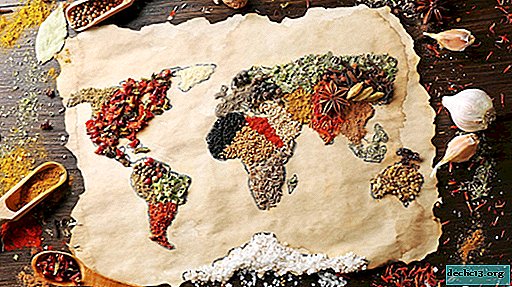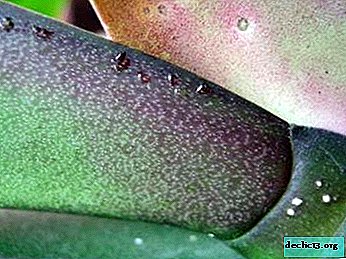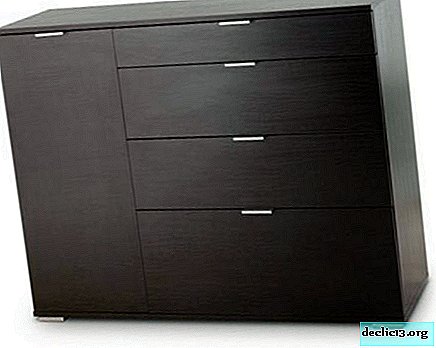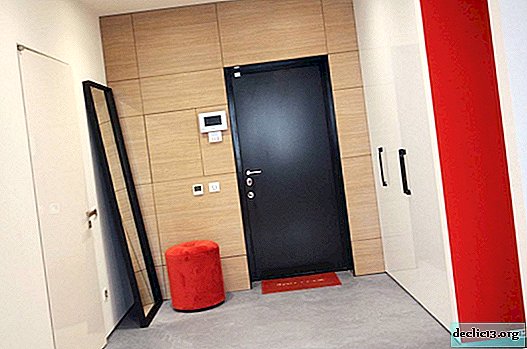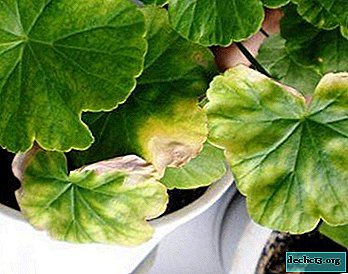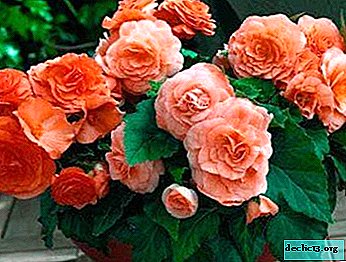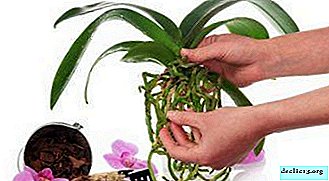How to make bonsai from a fat girl with your own hands? Plant care
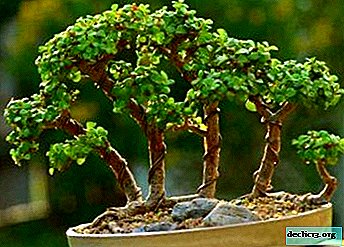
"Growing on a tray, a tree in a pot," is the word "bonsai" in Japanese. A sufficiently capacious name, including the essence of the ancient oriental art of bonsai.
Simply put, a bonsai is an ordinary small tree grown in a shallow vessel, tray, dish.
In the article, we will tell you what types of fat women are suitable, as well as how to properly form a thick trunk and a beautiful, magnificent crown.
What it is?
Bonsai is the art of gardening, which consists in growing a real tree in miniature. Moreover, the terrestrial part of the plant corresponds to the size of the root system and the proportions of this tree in nature.The main task in the formation of bonsai is to make the tree be small. It is achieved in the following ways:
- Growth retardation by:
- Pruning roots.
- Removing young shoots.
- Selecting poor soils with minimal fertilizer use.
- The use of special flat pots that prevent root growth.
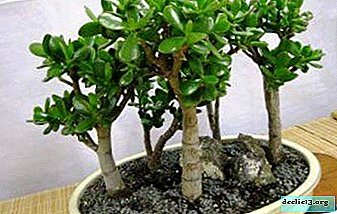 Using the method of weakening the flow of juices. Cross cuts are applied to the trunk or the trunk is braided with wire.
Using the method of weakening the flow of juices. Cross cuts are applied to the trunk or the trunk is braided with wire.- Pruning branches. Pruning helps awaken the right kidneys.
- The bending of the branches. The branches are entangled in copper wire.
Bonsai cultivation requires patience, attention and time. You can speed up the moment of receiving this miracle using various types of fat for bonsai.
What types of fat women are suitable?
To create a bonsai tree trefoils are used. Crassulas of this group are suitable due to their appearance and unpretentiousness.
- Crassula Ovata (C. Ovata) - abundantly branching bush with juicy small oval leaves.
- Crassula The Hobbit (C. Hobbit) - has an unusual shape of leaves - fused from the base to the middle and turned outward.
- Crassula tricolor (C. ovata var. Oblique cv. Tricolor) - a kind of fatty with white stripes on the background of a green leaf with a bright red border.
- Silver Crassula (C. argentea) - the sheet is covered with light specks and creates the effect of silver.
- Crassula Minor (C. ovate Minor) - a miniature plant with reddish leaves up to 1.5 cm long. It fits into any composition of the bonsai style.
How to grow a miniature tree from Crassula with your own hands?
Capacity selection
- The pot for growing bonsai of Krasul is different from the pot for bonsai of other trees. To obtain a thick trunk and a wide crown, the root system of the tree must be developed. Therefore, before the plant reaches a certain size, the pot should be training.
In the first stages of growing bonsai from Crassula, a regular flower pot is used. Upon reaching the desired size, the tree is transplanted. The pot must have drainage holes.
- The soil for bonsai is taken light, porous. The soil mixture should be based on gravel, bark, coarse sand, clay - pumice soil.
Landing
 Remove the fat girl from the flowerpot, removing excess soil from the roots.
Remove the fat girl from the flowerpot, removing excess soil from the roots.- Trim the root according to the size of the pot. Remove rotten and very long roots.
- Cut bare branches, alternating them.
To form a tree, put only one plant in a pot.
- Carefully place the tree in the tank and secure it with the support wire.
- Fill the pot with soil. Distribute the fertilizer evenly on the surface, according to the instructions, small pebbles, moss.
- Water the plant. Water until water appears on the pan.
- Put the pot in a well-lit place.
Pruning
Thick trunk formation
When forming a bonsai from a fat woman, you need to understand that a thick trunk will be obtained only after long branches grow. And the longer, the thicker and more powerful they will be at the base. After a set of sufficient length and thickness at the base, the branch is cut off. Over time, the slice is delayed, forming a powerful top on the trunk. Also after trimming long branches, ventilation and lighting of the trunk are improved. All energy will go to the trunk and it will gradually thicken.
How to independently form a crown?
Crona is formed by:
- Pruned (for an adult tree).
- Pinching (for a young plant).
How to do the cropping step by step?
- Trimming to produce during the period of active growth of the plant.
- Before pruning, clearly determine the shape of the future bonsai tree.
- Outline the stems that will eventually form in the bonsai branch.
- Slices do strictly along the stem, without grooves.
- Leave leaflets at the ends, remove the remaining ones.
- Trim regularly 2 to 3 cm below the site of the intended leaves.
- Repeated trimming contributes to a more dense arrangement of primordia. Gradually, the fat woman will begin to turn into a tree.
- After trimming, let the tree dry.
For the cultivation of bonsai from Crassula, light pruning is preferably done weekly.
- In addition to pruning, the tree needs to be inspected, to remove excess leaves (at the bottom of the trunk, uneven or too large).
- Trimming is done in stages. Do not cut off all the extra shoots at once. This will allow the plant to relax.
Rules for pinching a young Crassula
To obtain a lush crown and a thick trunk, the tips of the shoots are pinched.
- You need to start by planning your future bonsai form.
- Cut off the crown, leaving the planned length.
- As the plants grow, pinch off sprouts that do not correspond to the shape of the future bonsai.
Bonsai cultivators often use wire to fix the trunk and branches. For a fat woman, this technique is undesirable, since the rosula is a fragile plant that is very easily irreparably damaged.
Photo
Next, you can see a photo of a bonsai from a fat girl:



Further care
The fat woman is very unpretentious and does not require special care even after trimming. It is enough for the updated tree to provide the usual correct conditions of detention:
- Lighting. Crassula is a photophilous plant, but direct sunlight can cause reddening of the leaves, burns and even their loss.
- Watering. Crassul is better to underfill than to overfill. Excess moisture causes rotting of the root and contributes to the development of the fungus.
- Spraying. The leaves of the Crassula are able to accumulate moisture, so it does not need to be sprayed. To clean the leaves from dust, a warm shower is carried out.
- Temperature. Crassula adapts to any room temperature. Only a sharp change should be excluded.
Growing difficulties
- The fragility of branches and leaves. When forming a bonsai crown, a plant should be treated with extreme caution. Incorrect movement - and the branch that has been cultivated and cherished for a long time can break.
- Rotting of the roots. The reason may be a violation of the rules of planting and care: the use of poor drainage, improper soil composition, overfilling of the plant.
- Dehydration perhaps in the case when an inexperienced bonsaist fears overflow.
- Pests. The main thing in pest control is to detect and destroy them in time. Taking at least a few minutes a day to inspect your bonsai can solve the problem in a timely manner.
Thus, adhering to the above rules and recommendations, after a while you can become the owner of a miniature miracle in the bowl. And the money tree bonsai will become a training instance in the collection of more complex bonsai trees.

 Using the method of weakening the flow of juices. Cross cuts are applied to the trunk or the trunk is braided with wire.
Using the method of weakening the flow of juices. Cross cuts are applied to the trunk or the trunk is braided with wire. Remove the fat girl from the flowerpot, removing excess soil from the roots.
Remove the fat girl from the flowerpot, removing excess soil from the roots.


